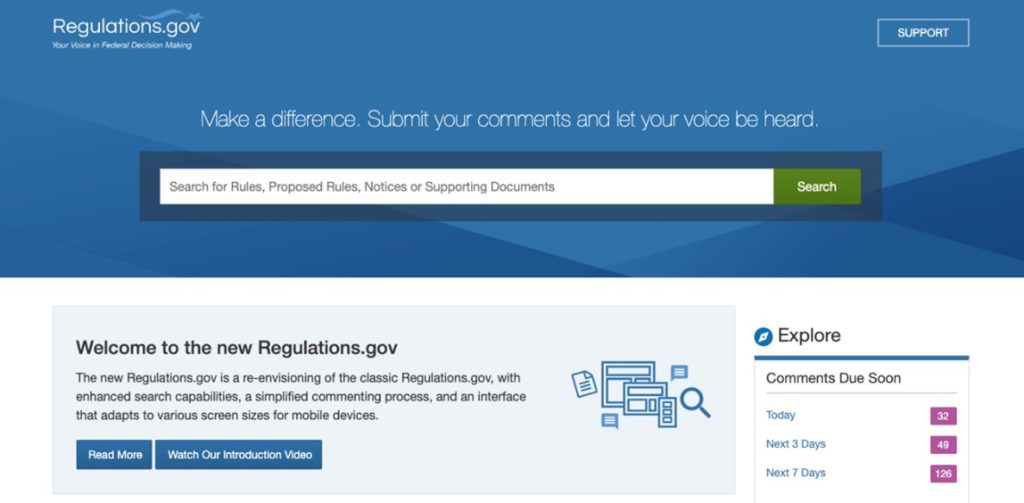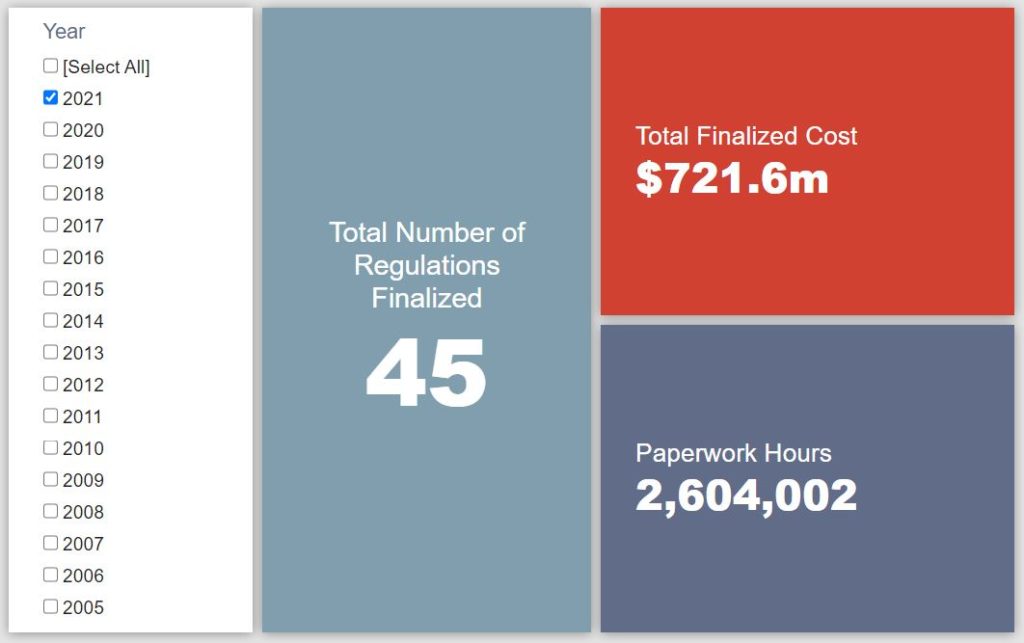Week in Regulation
February 22, 2021
A Trump-Era Proposal Slips Through
Last week was largely another quiet one in terms of overall regulatory activity. There was one action, however, that was cause for raised eyebrows. A proposed rule from the Department of Labor (DOL) signed near the very end of 2020 somehow made it past the new administration’s regulatory freeze and into the pages of the Federal Register. Across all rulemakings, agencies published $279.8 million in total net cost savings but added 465,747 hours of annual paperwork.
REGULATORY TOPLINES
- Proposed Rules: 13
- Final Rules: 37
- 2021 Total Pages: 10,425
- 2021 Final Rule Costs: $721.6 million
- 2021 Proposed Rule Costs: -$8.4 billion
NOTABLE REGULATORY ACTIONS
The DOL proposal mentioned above was the main attraction of the week. The rulemaking seeks “to modify the Hazard Communication Standard (HCS) to conform to the United Nations’ Globally Harmonized System of Classification and Labelling of Chemicals (GHS) Revision 7.” DOL estimates – tellingly, under the parameters of the now-defunct Executive Order (EO) 13,771 – that such changes would yield $19.6 million in annual savings (or $280 million in present value).
Despite it getting the official sign-off on December 28, 2020, and its references to EO 13,771, this proposal seems to have passed muster under the review procedures of the Biden Administration’s regulatory freeze memo. Perhaps this is due to the fact that it seeks to align domestic regulatory code with certain international standards. Regardless of the exact reason why the new administration let it go forward, since it is only a proposed rule, its eventual final version may end up significantly different.
TRACKING THE ADMINISTRATIONS
As we have already seen from executive orders and memos, the Biden Administration will surely provide plenty of contrasts with the Trump Administration on the regulatory front. And while there is a general expectation that the new administration will seek to broadly restore Obama-esque regulatory actions, there will also be areas where it charts its own course. Since the American Action Forum’s RegRodeo data extend back to 2005, it is possible to provide weekly updates on how the top-level trends of President Biden’s regulatory record track with those of his two most recent predecessors. The following table provides the cumulative totals of final rules containing some quantified economic impact from each administration through this point in their respective terms.
![]()
There was negligible change from the prior week in terms of final rule activity. This largely aligns with similar week-to-week trends from the prior administrations. It remains to be seen if there’s a clear, identifiable point in a given administration where the regulatory freeze breaks and more typical levels of regulatory activity resume.
THIS WEEK’S REGULATORY PICTURE
This week, the federal government’s rulemaking portal got a facelift.
On February 18, the federal government officially transitioned to a new version of Regulations.gov, the online rulemaking portal. The first photo below shows the classic home page, while the second photo shows the new look.


For the uninitiated, Regulations.gov is the website where the public can submit comments to agencies on proposed rules and other actions requesting public input. In addition, users can view rulemaking dockets to see what comments other users have submitted and the supporting documents the agency is using to justify its action, including regulatory impact analyses.
Beyond the cosmetic changes, the new site is also aimed at streamlining the comment process. In the old version, the type of information commenters provided on themselves depended on the agency. In the new version it is standardized for every agency. Users are asked to choose to submit a comment as an individual (requiring a first and last name), an organization (requiring an organization name), or anonymously.
The site also uses reCAPTCHA technology to crack down on bots and automated systems spamming dockets with comments. Other improvements include enhanced search capabilities and a better format that adapts to screen sizes of various sizes, such as mobile phones.
TOTAL BURDENS
Since January 1, the federal government has published $7.7 billion in total net cost savings (with $721.6 million from finalized rules) and 8.4 million hours of net annual paperwork burden reductions (with 2.6 million hours in increases from final rules).












